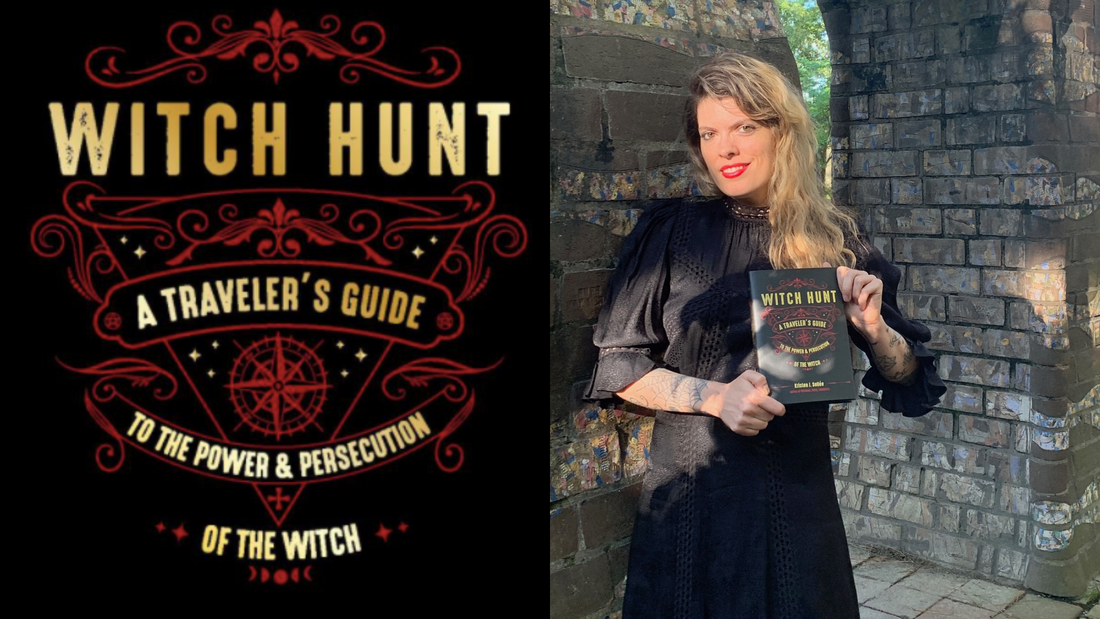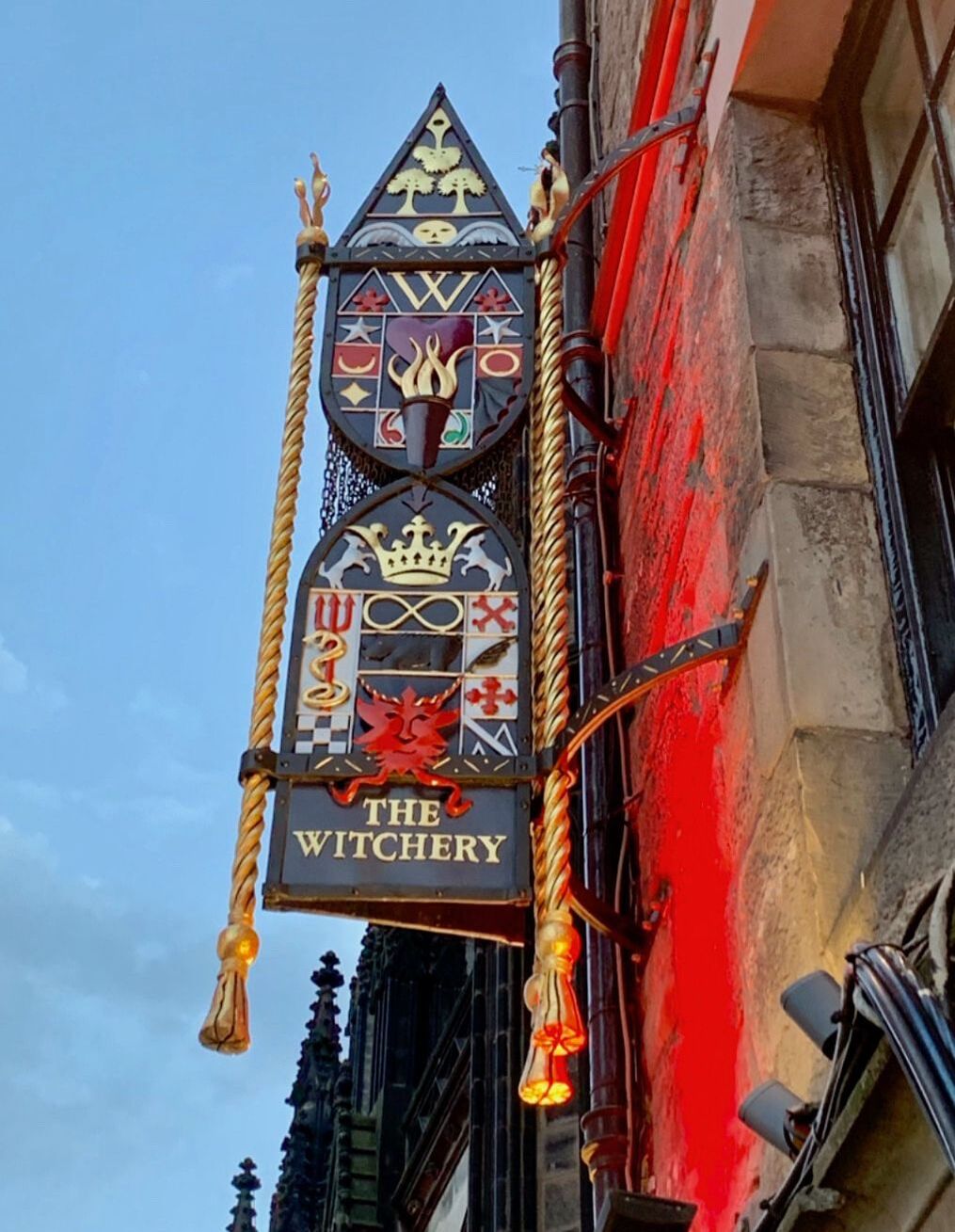|
By Amber C. Snider Kristen Sollée discusses the spiritual and ancestral power of place, witches of the ancient world, and her most memorable experiences while traveling for her new book, Witch Hunt. In her latest book, author Kristen Sollée guides readers on a mystical journey to uncover the legacy of the witch figure across Europe and North America. Part memoir, part travelogue, Witch Hunt (which debuted earlier this month) explores both the power and persecution of the witch, offering historical insight into witch hunts in Italy, France, Germany, Ireland, the United Kingdom, and the United States. Amber C. Snider: Have you ever come across a place (while working on this book or otherwise) where you felt you've always known it in some way? And that it was profoundly familiar? Kristen Sollée: Absolutely. That feeling is one I have often encountered, and it was a driving force behind writing Witch Hunt. I wanted to tap into the magic of place with this book, and the energies and entities one might pick up on in different locations. A memorable example of this experience is how I’ve always taken so effortlessly to London ever since I first visited almost 15 years ago. I never felt uneasy, I never felt lost, it just seemed 'right.' There was a calm that overtook me the first time I walked the city’s streets. All I can say is that it’s probably because I have a lot of ancestry from there, that it was a real return for me. ACS: Do you think we have spiritual or soul attachments to different locations because of reincarnation? KS: I definitely believe we can have spiritual connections to different locations, but for me it’s not about reincarnation but specifically ancestral connections. I know there is cellular memory within us, and I have felt a strong homecoming, an electricity throughout my body when I visit certain places. Through genealogical research, I have later come to realize that many of those places are where my ancestors have lived. Places are alive with the dead who once lived there, so in that sense, the land can be as much of an ancestor as a living person. ACS: How would you describe the connection between mythology, the witch figure in history, and travel? KS: Well I like to think of the witch as a traveler. Over thousands of years the witch has crossed continents, appearing in the art, literature, mythology, and magical practice of disparate cultures, shifting shape and imparting us with various ideas about sex and gender, magic and power along the way. Witch Hunt specifically focuses on the early modern European witch hunts and that legacy of persecution, so I am talking here more about the witch in the conceptual region we call 'the West,' because of course, witch figures exist in most cultures around the world. Witches of the ancient world (Mesopotamia, Greece, Rome) are very different from the witch figures of medieval, early modern, and contemporary times, but they share similar attributes (often designated female/feminine, have magical abilities that are suspect/ feared/ subversive). The travel I undertook for the book research was a way to follow this serpentine path that the witch has taken from ancient times to the present. It allowed me to explore these links more than I could if I just sat at home, reading. There’s no substitute for seeing ruins and churches and landscapes that contributed to our understanding about what or who the witch is in art, literature, mythology, and magical practice. Amber C. Snider: Out of the 'seven countries and forty-five cities, towns, and villages' you visited while conducting research for this book, what was your favorite location? KS: It’s impossible to choose! I honestly don’t have a single favorite. But I have always loved traveling throughout Italy, and it was an equally wonderful place for 'witch travel.' Triora in particular is a treat because the scenery, the history, and the town itself are just incredibly compelling. Perched high in the Italian Alps near the French border, Triora has often been deemed the 'Salem of the Mediterranean' because there are multiple museums dedicated to memorializing the town’s 16th century witch hunt and a lot of contemporary practitioners gather for rituals and neo-pagan festivals there. I arrived just in time for a beautiful Midsummer/Litha ritual when I visited, complete with early modern music and a fire ritual that snaked through the medieval stone streets. ACS: What was the strangest experience you had while working on this book? Did anything out of the ordinary happen in your travels? KS: There were many synchronicities and unexpected occurrences during my travels, it was a very strange research process overall. But I’d say that the ghost hunt I went on in Lancashire certainly was a wild experience. There were multiple spirit boards used during visits to centuries-old sites and a lot of messages came through that I was NOT expecting… ACS: You 'debunk' a lot of myths and misconceptions about the Roman Catholic Church/Vatican in the chapter 'Witch's Guide to the Vatican.' Why was this an important component to include in the book? KS: There’s so much misinformation about the witch hunts, and I continually find myself unlearning erroneous beliefs about the period the more I read. The Catholic Church figures in so many of these myths that I wanted to include a visit to the Vatican in the book. Many accused witches in early modern times drew their rituals from Catholic liturgy and prayer (and often threw in a little something else from popular folk magic, too). You really can’t separate the witch hunts from their Christian context, nor our ideas about the archetypal witch. So I wanted to explore these ideas through the artifacts I found in the Vatican Museums. The art on view is just incredible, there is so much art that features pagan deities and symbology. You’ll see Sekhmet, Athena, Aphrodite, etc. around every corner! I think the biggest takeaway from my trip there was how the line between Christian and Pagan is blurry at best, as much as the clergy would like to pretend it’s not! ACS: Was it difficult, from a writing perspective, to weave in your personal narrative and travel experience with historical anecdotes and information? What was that process like? KS: I always write in an interdisciplinary way because I have a background that’s steeped in both arts journalism and academia, and I can never decide which discipline I prefer. There are plenty of witch books by historians if you want straight up history, and plenty of witch memoirs, but none so far that combine a travelogue, memoir, and academic analysis into a weird hybrid like I’ve done. My writing goal is always to try something new and put something out into the ether that hasn’t existed before (or that I always wished had existed!). ACS: Which location from the book is often 'misunderstood'? And how does Witch Hunt offer new clarity and insight into that place? KS: Well certainly the Vatican is not a place you’d think of when you’d want to partake in 'witch tourism,' so I like to think that I clarified why that is in the book! And more than that, I think Witch Hunt uncovers a lot of places that folks might not know have a witch history at all, like, say, Jamestown, Virginia or Rehoboth Beach, Delaware. ACS: You mention visiting an 800-year old oak tree in Lancashire, England. What drew you to that tree and what was your experience like there? KS: Certainly anyone who partakes in nature-based magical practices does so because they can feel the majesty and energetic prowess inherent in the earth, in plants. In our language we talk about being 'grounded' and 'rooted' — so many of us are basically striving to have the properties that trees come by naturally! In a variety of pre-Christian societies, trees were sacred in themselves and were believed to house certain deities. During my research I visited two trees that were over 500 years old, one in Tuscany and one in Nottingham. The one in Tuscany, Quercia delle Streghe or the Oak of the Witches, is so named because its branches look like a coven of witches in [a] ritual. The tree emits an incredible gravitas, I wrapped my arms around her and just breathed in and out for a little while. A really magical experience. ACS: If there's one 'bucket list' location or site that every reader should visit from your book, what would it be? Once COVID-19 is eradicated and all... KS: I would have to say that entirely depends on what that reader is interested in! But for Americans? I’m gonna give an obvious answer and say: definitely Salem if you haven’t been, as it’s such a vital place in terms of witchcraft history and in terms of understanding American culture within a religious and political context. Kristen J. Sollée is the author of three books on the legacy of the witch: Witches, Sluts, Feminists: Conjuring the Sex Positive; Cat Call: Reclaiming the Feral Feminine; and Witch Hunt: A Traveler’s Guide to the Power and Persecution of the Witch. A writer, curator, and educator exploring the intersections of art, gender, and occulture, Kristen has been featured on NPR and in The Guardian. She currently teaches at The New School in New York City. You can purchase Witch Hunt here. To read another Enchantments' interview with Kristen Sollée on her book Cat Call: Reclaiming the Feral Feminine, click here.
1 Comment
12/4/2022 05:18:27 am
hanks for sharing the article, and more importantly, your personal experience of mindfully using our emotions as data about our inner state and knowing when it’s better to de-escalate by taking a time out are great tools. Appreciate you reading and sharing your story since I can certainly relate and I think others can to
Reply
Leave a Reply. |
Archives
April 2024
MastheadPublisher Categories |






 RSS Feed
RSS Feed